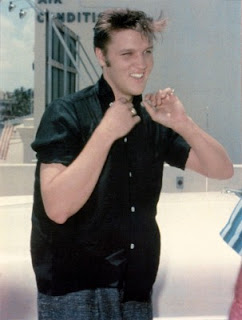lunes, 31 de diciembre de 2012
domingo, 30 de diciembre de 2012
100 REASONS WHY ELVIS IS 'STILL' THE KING
viernes, 28 de diciembre de 2012
1956 PICTURES

October 28, 1956 in a break prior to the Ed Sullivan show. last pic. is with with British comedienne Joyce Grenfell seen in the background,who starred in the same Ed Sullivan show.. From Joyce Grenfell's autobiography 'In Pleasant Places', Joyce recalls that when she arrived at the CBS Studio at two o'clock that afternoon,there were barricades on West 56th Street to hold back the crowds of girls who had been there since early morning hoping to catch a glimpse of Elvis. Diary entry 28th October 1956: "Elvis is a pasty-faced plump boy of twenty one. At rehearsal he wore a navy blue sweater with red stripes round the yoke. His hair isn't long and his sideburns arn't that long either. For the show he wore a Kelly green jacket,grey pants and white buckskin desert boots. When he was introduced to me he said,as he looked away 'Nice to know you honey' . I asked him if all the adulation was very trying. He called me ma'am and said.'I don't want to brag,but I'm kinda used to it now. It's been goin' on a year' I thought he was pleasant,a bit of a roly-ploy boy,but a good singer of his sort of hillbilly songs. We were photographed together. He put his arm round my neck and breathed down my ear-hole."
jueves, 27 de diciembre de 2012
Colonel Parker’s Contracts Kept Elvis Working in Hollywood
Colonel Parker's Contracts Kept
Elvis Working in Hollywood
In November 1955, Tom Parker was not yet Elvis Presley's legal manager. He wouldn't achieve that goal until four months later. But Parker already had big plans in mind for the 20-year-old rock 'n' roll phenom. On November 14, 1955, the Colonel informed Harry Kalcheim at the William Morris Agency in New York that he was "interested in making a picture with this boy." From that simple initial inquiry eventually grew the remarkable and controversial Hollywood career of Elvis Presley.
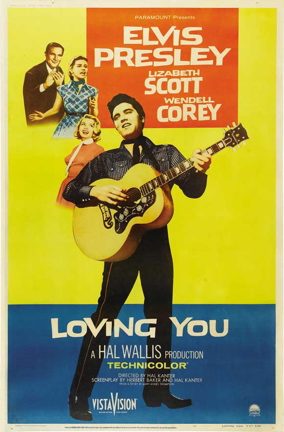
Over the following 16 years, Presley would appear in 31 theatrical movies and 2 documentary films. While Elvis toiled before the cameras of seven different Hollywood studios, Colonel Parker did the contractual work behind the scenes. Between 1956-1972, Parker negotiated 16 motion picture contracts for Elvis. In arriving at those agreements, the Colonel utilized his unique "skill set" of tough negotiating techniques, combined with occasional shady maneuvers, to maximize Elvis's income (and his own). Laying that backstory aside for now, let's take a brief look at the details of the 16 contracts that Parker parleyed for his client. Peter Guralnick and Ernst Jorgensen's Elvis: Day by Day is the main source for the following information.
Parker didn't have to sell Elvis to Hollywood. Instead, Hollywood came looking for Elvis in the form of Paramount producer Hal Wallis. After seeing Elvis on the Dorsey Brothers national TV program in February 1956, Wallis quickly arranged a screen test for Presley in late March. Convinced that Elvis would lure a multitude of teenagers into movie theaters, Wallis offered the singer a movie contract on April 2. Wallis and Parker then got to work hammering out the details.
• Contract #1: Paramount | April 1956
Finalized on April 25, 1956, the contract was for one picture with studio options for six more. The deal was to pay Elvis $15,000 for the first movie, $20,000 for the second, $25,000 for the third, and so on, culminating in $100,000 for the seventh one. Parker would be allowed to contract with another studio for one other Presley film per year. Two films, Loving You(1957) and King Creole (1958), would be made under this contract. In January 1957, Parker cajoled Wallis into paying Elvis a $50,000 bonus on top of his $15,000 salary for Loving You. In November 1957, the Colonel got Wallis to pay Elvis $30,000 in expenses and a $50,000 bonus to go with his $20,000 fee for King Creole.
• Contract #2: 20th Century-Fox | August 1956
Unable to find a suitable script for Elvis, Wallis waived his contractual right to produce Presley's first movie. Parker moved quickly to make a deal with 20th Century-Fox. Presley's star had risen considerably since the Paramount contract was signed, and so the Colonel was in a position to ask for a much higher fee for his client. The contract called for Elvis to receive $100,000 and costar billing for his first film, Love Me Tender. The contract gave Fox an option for two more films at $150,000 and $200,000. In October 1958, Parker renegotiated Elvis's fee for the two optional films up to $200,000 and $250,000. The two option pictures made under this contract were Flaming Star (1960) and Wild in the Country (1961).
• Contract #3: Metro-Goldwyn Mayer | February 1957
Exercising his right under the existing Paramount contract to one outside Presley movie per year, Parker came to terms with MGM on a single-film deal. Elvis was to receive $250,000 in salary for Jailhouse Rock (1957). Also, for the first time, the Colonel got a 50% share of the film's profits for Elvis written into the contract.
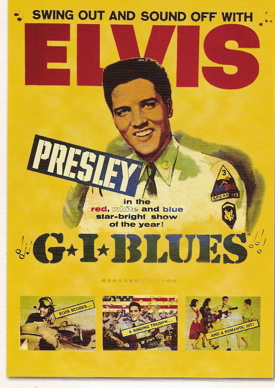
• Contract #4: Paramount | October 1958
The 1956 Paramount contract was completely rewritten. For his first film after leaving the army, Elvis was to receive $175,000 (a $150,000 raise over what the previous contract allowed). Wallis got options for three more films, at $125,000, $150,000, and $175,000 "against 7½% of gross receipts after the film has earned out." Only G.I. Blues (1960) was made under this revised contract.
• Contract #5: United Artists | November 1960
Colonel Parker negotiated a two-picture deal with the Mirisch Brothers production company. It would pay Elvis $500,000 and 50% of the profits for each movie. Hal Wallis had the right to override the deal by matching its financial terms, but he declined to do so. Follow That Dream (1961) and Kid Galahad (1962) were produced under this contract.
• Contract #6: Paramount | January 1961
Wallis agreed to rewrite the 1958 Presley contract. It became a five-picture deal with Elvis getting $175,000 for each of the first three films and $200,000 apiece for the last two. The five movies completed under this contract wereBlue Hawaii (1960), Girls! Girls! Girls! (1962), Fun in Acapulco (1963),Roustabout (1964), and Paradise, Hawaiian Style (1966). Later, a bonus of $90,000, to be split evenly between Elvis and the Colonel, was added for the last film.
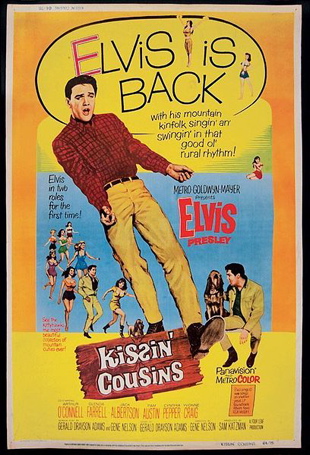
• Contract #7: MGM | January 1961
Just a few weeks after completing the five-picture Paramount deal, Colonel Parker obligated Elvis to do four movies for MGM. The finances were the same for all the films. Elvis's salary would be $400,000 per picture, plus $75,000 in general expenses and $25,000 for musical expenses. After MGM recouped $500,000, Elvis would receive 50% of the profits. The four films made under this contract were It Happened At the World's Fair (1963), Viva Las Vegas (1963), Kissin' Cousins (1964), and Girl Happy(1965).
• Contract #8: Allied Artists | November 1963
Colonel Parker and the struggling Allied Artists company agreed to a one-picture deal that would pay Elvis $600,000 plus $150,000 in expenses and 50% of the profits. The contract also put a ceiling on production costs at $1,500,000. Thus, Elvis's compensation package of $750,000 would be at least half of the picture's budget. The profits from Tickle Me in 1965 helped keep Allied from going bankrupt.
• Contract #9: United Artists | December 1964
Colonel Parker entered into another two-picture deal with United Artists, which had produced Follow That Dream and Kid Galahad in 1962. Under this new agreement, Elvis would receive $650,000 each for the two films, which were Frankie and Johnny (1966) and Clambake (1967).
• Contract #10: MGM | December 1964
Parker completed a new agreement with MGM for three more pictures. It called for Elvis to receive $1 million for the first film. A quarter of that was to be paid to Elvis at $1,000 a week over five years. For the other two movies, Elvis was to receive $750,000 each. In addition, the contract gave Presley 40% of the profits from all three films. Made under this pact were Harum Scarum (1965), Spinout (1966), and Double Trouble (1967).
• Contract #11: MGM | January 1966
Although only one picture had been made under the December 1964 contract, the MGM agreement was extended to include four more films. Elvis's fee was set at $850,000 for each film with profit sharing increased to 50%. Titles produced under this agreement were Speedway (1967), Stay Away, Joe(1968), Live a Little, Love a Little (1968), and The Trouble With Girls (1968).
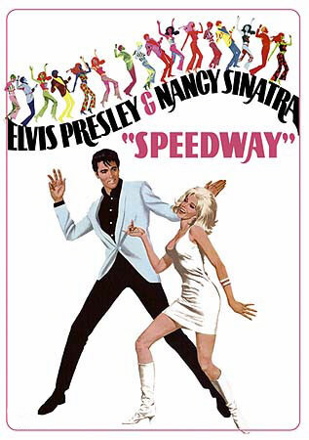
• Contract #12: Paramount | April 1966
With work under the 1961 Paramount contract completed, Parker entered into contentious discussions with Hal Wallis over a new contract for Elvis. The Colonel wanted $500,000 per picture for his client, with 20% of the profits. After seven months of wrangling over details, Wallis finally agreed to those figures. However, Wallis, who had become increasingly disappointed with Elvis's work, made the agreement for one picture only. There were no options. Easy Come, Easy Go (1967), made under this contract, was Elvis's last film for Paramount.
• Contract #13: National General | November 1967
With Paramount out of the picture and only two more films left to do for MGM, Parker scouted other studios to get Elvis work. He lined up a one-picture deal with National General that would pay Elvis $850,000 and 50% of the profits. Parker also got from National something that Wallis wouldn't give him—a commitment to a non-singing role for Elvis in Charro! (1969).
• Contract #14: NBC-Universal | January 1968
On January 12, 1968, NBC Vice President Tom Sarnoff announced a deal with Colonel Parker and Elvis had been reached for Presley to make a television special. Given little note in the anticipation of Elvis's return to TV was his commitment under the contract to make a feature film for NBC's subsidiary company, Universal Studios. Elvis received $850,000 for the movie, Change of Habit (1969), and another $25,000 for the music in the film.
• Contract #15: MGM | April 1970
Colonel Parker worked out a deal with MGM to have Elvis's Las Vegas show filmed for a documentary movie. The agreement paid Presley $500,000.Elvis: That's the Way It Is was released in November 1970.
• Contract #16: MGM | March 1972
Just a month prior to Elvis's fifteen-city tour in April 1972, Parker quickly put together a deal with MGM for another documentary. Apparently, the deal was not completely worked out when filming began, but Elvis reportedly received $1 million for his thirty-third and final motion picture, Elvis on Tour.
Certainly, the unprecedented salaries, expenses, and bonuses Colonel Parker won for Elvis in the 16 Hollywood contracts he negotiated were impressive. It's important to keep in mind, however, that throughout Presley's career, his manager received 25% of his acting income, as dictated in their personal contract. If a studio contract called for Elvis to receive $500,000 for a film, Parker took $125,000, leaving his client $375,000. Actually, it was less than that, since Colonel Parker deducted all of his expenses from Elvis's share. |Alan Hanson (June 2012)
martes, 18 de diciembre de 2012
N.C. CONGRESSMAN SEEKS "ELVIS PRESLEY DAY"
| ||
N.C. congressman seeks 'Elvis Presley Day' N.C. congressman seeks 'Elvis Presley Day'

A North Carolina congressman defeated for re-election last month has introduced a resolution expressing congressional support for designating Jan. 8 as "Elvis Presley Day." Rep. Larry Kissell has already picked up 10 co-sponsors. (SHNS file photo by Charles Nicholas / The Commercial Appeal) (RS)
WASHINGTON - A North Carolina congressman defeated for re-election last month has introduced a resolution expressing congressional support for designating Jan. 8 as "Elvis Presley Day."
Rep. Larry Kissell, D-N.C., has already picked up 10 co-sponsors. The resolution notes that Presley was born Jan. 8, 1935, in Tupelo, Miss., and "remains one of the most famous American entertainers of all time whose influence on music and whose cultural impact continues today." It notes that Presley served in the U.S. Army and has been "hailed as the 'King of Rock and Roll.'" It notes that he died in Memphis and that Graceland is on the National Register of Historic Places. And it points out that the 1993 postage stamp featuring Elvis became the most popular commemorative stamp in United States history. In a statement shortly after introducing the resolution, Kissell, who represents a district east of Charlotte, said that in 1973, a billion people eventually watched the Elvis television broadcast, "Aloha from Hawaii." "We have many Elvis fans in our district, and on their behalf I have introduced a resolution to express the sense of Congress that Elvis' birthday, January 8, should be celebrated," Kissell said in the statement. "This legislation costs no money to taxpayers and doesn't require a day off for the federal government, but it does celebrate perhaps our first real worldwide cultural icon whose legacy continues to help us export our culture internationally. "I believe our government can do more than one thing at a time, and that as we continue to try to find a resolution to our budget woes and get our fiscal house in order, we can also find common ground on a simple bill like this one." The legislation-monitoring website Govtrack.us gives the bill a 31 percent chance of passing before Congress adjourns later this month. Contact Bartholomew Sullivan of The Commercial Appeal in Memphis, Tenn., at sullivanb@shns.com. |
viernes, 7 de diciembre de 2012
List of some actors who have played Elvis Presley
- Actor type of character type of media
- Paul Hipp Elvis Presley Liberace: Behind the Music (1988)
- Peter Dobson young Elvis Presley Forrest Gump (1994)
- Shawn Wayne Klush young Elvis Presley Shake, Rattle and Roll: An American Love Story (1999) (TV mini-series)
- Tyler Hilton young Elvis Presley Walk the Line (2005)

- Val Kilmer Elvis Presley ghost True Romance (1993)

|
Credited character
|
Title (year of theatrical release, unless
otherwise noted)
|
|
|
(fictional) Elvis Presley
|
||
|
Elvis Presley, age 10.
|
This Is Elvis (1981)
|
|
|
Elvis Presley, age 10.
|
Elvis (1990) (TV
mini-series)
|
|
|
i)
and ii) (fictional) Elvis Presley
|
ii) Bubba Nosferatu (2006/7) |
|
|
i)
(fictional) young Elvis Presley
ii) The King |
ii) The Headhunter (2006/7) |
|
|
Elvis Presley, ages 23-25
|
Sgt. Presley (2007)
|
|
|
teenage Elvis Presley
|
||
|
Aaron Presley (Elvis re-incarnated)
|
Elvis took a bullit (2001)
|
|
|
young Elvis Presley
|
||
|
(fictional) Elvis Presley
|
||
|
Elvis as a boy
|
Elvis (1979) (TV-made)
|
|
|
Elvis Presley, age 42.
|
This Is Elvis (1981)
|
|
|
young Elvis Presley
|
Walk the Line (2006)
|
|
|
Elvis Presley
|
||
|
Elvis Presley
|
Elvis
and the Beauty Queen (1981) (TV-made)
|
|
|
(fictional) Elvis Presley
|
Finding Graceland (1998)
|
|
|
(fictional) Elvis Presley
|
Heartbreak Hotel (1988)
|
|
|
(fictional)The mentor
|
||
|
young Elvis Presley
|
||
|
Elvis Presley
|
Tears of a King (2006/7)
|
|
|
The
visitor (Elvis Presley, age 21).
|
Picasso
at the Lapin Agile
(1993, play)
|
|
|
Elvis Presley, age 35.
|
This Is Elvis (1981)
|
|
|
(fictional) Elvis Presley
|
||
|
Elvis Presley
|
||
|
Elvis Presley
|
Elvis
and Me (1988)
(TV-made)
|
|
|
(fictional) Elvis Presley, age 26
|
Hounddog (2006/7)
|
|
|
(fictional) Mr. Aaron
|
Lonely Street (2006/7)
|
|
|
Elvis Presley
|
Elvis
meets Nixon
(1997) (TV-made)
|
|
|
young Elvis Presley
|
Shake,
Rattle and Roll: An American Love Story (1999) (TV mini-Series)
|
|
|
Elvis Presley
|
Elvis (2005) (TV mini-series)
|
|
|
Elvis Presley
|
Elvis (1979) (TV-made)
|
|
|
(fictional)Elvis Presley
|
Nightmares
and Dreamscapes: From the Stories of Stephen King: "You Know They Got a
Hell of a Band" (2006) (TV-made)
|
|
|
Elvis Presley, age 18.
|
This Is Elvis (1981)
|
|
|
Elvis Presley
|
Are You Lonesome Tonight? (1985, play)
|
|
|
Elvis Presley
|
Crazy (2006/7)
|
|
|
Elvis Presley
|
King and Me, The (1999)
|
|
|
i)and ii)
young Elvis Presley
iii)(fictional) young
Elvis Presley |
i) Elvis
(1990) (TV mini-series)
ii) Great Balls of
Fire! (1989)iii)Heart of Dixie (1989) |
|
|
Elvis Presley
|
Elvis
and the Colonel: The Untold Story (1993) (TV-made)
|
Thus far, more than 50 actors have tried, with varying degrees of success, to play an Elvis Presley character at any age, and during every period of Presley's life and career, both on films and in the theater.



